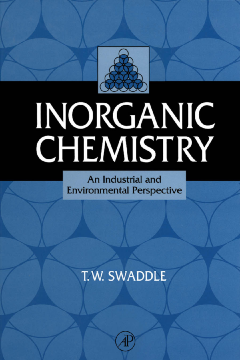
Additional Information
Book Details
Abstract
This book addresses the question, What is inorganic chemistry good for? rather than the more traditional question, How can we develop a theoretical basis for inorganic chemistry from sophisticated theories of bonding? The book prepares students of science or engineering for entry into the multi-billion-dollar inorganic chemical and related industries, and for rational approaches to environmental problems such as pollution abatement, corrosion control, and water treatment. A much expanded and updated revision of the 1990 text, Applied Inorganic Chemistry (University of Calgary Press), Inorganic Chemistry covers topics including atmospheric pollution and its abatement, water conditioning, fertilizers, cement chemistry, extractive metallurgy, metallic corrosion, catalysts, fuel cells and advanced batter technology, pulp and paper production, explosives, supercritical fluids, sol-gel science, materials for electronics, and superconductors. Though the book waswritten as a textbook for undergraduates with a background of freshman chemistry, it will also be a valuable sourcebook for practicing chemists, engineers, environmental scientists, geologists, and educators.
Key Features
* Presents the principles of inorganic chemistry in terms of its relevance to the real world of industry and environmental protection
* Serves as a concise reference for practicing scientists, engineers, and educators
* Emphasizes industrially relevant energetics and kinetics rather than bonding theories
* Features extensive cross-referencing for easy location of supporting material
"The standard of writing and production is excellent. The principles are clearly explained and are illustrated by interesting examples. Consequently, the book makes agreeably easy reading and invites browsing....this book can provide the newcomer to inorganic chemistry with a good first insight into a variety of interesting topics,..." --Steffen Hasenzahl
